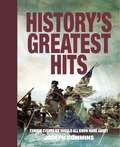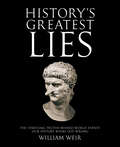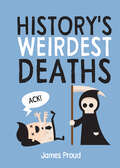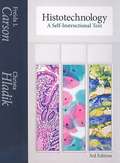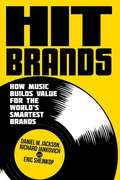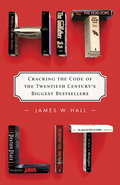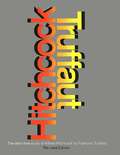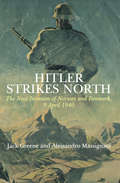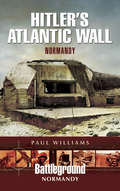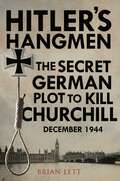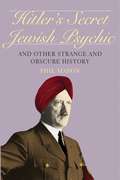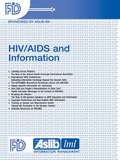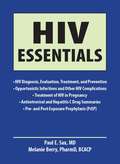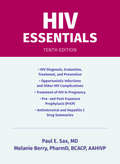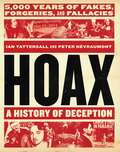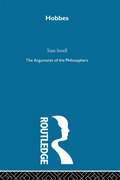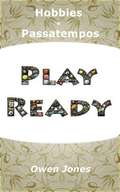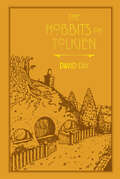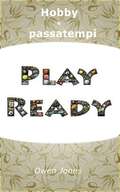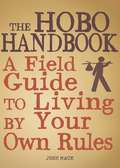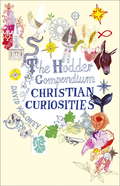- Table View
- List View
History's Greatest Hits
by Joseph CumminsIn this unillustrated edition, Joseph Cummins recounts thirty-seven of the best-known episodes from the past. Not only does he relate and re-create these events in captivating fashion, he also analyzes their impact on subsequent history and explains the reasons for their enduring fame. Accompany Hannibal over the Alps with a herd of elephants and learn what led him to attempt such a daunting and outlandish undertaking. Cross the Delaware River with George Washington to discover how his subsequent raid on British-held Trenton, New Jersey, changed the course of the American Revolution. Follow the British Light Brigade into the "Valley of Death" during the Crimean War and find out how this farcical military blunder was immortalized through its rendition in verse.- We've all heard of these momentous events, but how much do we really know about them? And why do we remember them?- Inside readers find thirty-seven in-depth accounts of the greatest events in history.Gripping, revealing, and informative, History's Greatest Hits is a fascinating read for history buffs, or anyone seeking to understand the world we live in today.
History's Greatest Lies: The Startling Truths Behind World Events Our History Books Got Wrong
by William WeirGet the real facts you weren’t taught in school and learn how these myths have survived for so long.Discover the stories behind history’s greatest lies and how—and why—the world’s biggest whoppers have survived textbooks and lesson plans for years. For instance, did you know the conquistador Hernán Cortés wasn’t as bloodthirsty as they say? Neither were the Goths, who were actually the most progressive of the Germanic tribes. Or, that a petty criminal with a resemblance to John Dillinger was probably assassinated instead of the notorious bank robber?In History’s Greatest Lies, Weir sets the record straight through a fascinating examination of historical lies and myths and the true stories behind them. Each chapter pinpoints a misconception held as common truth in history.For example:Emperor Nero did not fiddle as Rome burnedPaul Revere had plenty of help in his midnight rideIn terms of prisons, the Bastille wasn’t all that badWeir explains why each lie persevered in our minds through ulterior motives, responsibility shirking, or exaggerations. You’ll also discover the common threads that make up these falsehoods: the scapegoats, the spin needed to cast undeserving in a better light, and the frightful oversimplification of facts.Praise for History’s Greatest Lies“Weir takes no prisoners—and tells no lies—in his continuously surprising and always fascinating new book. Great falsehoods have shaped history even more than great truths; the enduring fascination of this highly original volume is discovering how much of what we accept for fact is just plain wrong.” —Joe Cummins, author of The War Chronicles: From Chariots to Flintlocks and History’s Greatest Untold Stories
History's Weirdest Deaths: History's Weirdest Ways to Die
by James ProudA Simon & Schuster eBook. Simon & Schuster has a great book for every reader.
Histotechnology: A Self-instructional Text
by Freida L. Carson Christa HladikAn indispensable teaching tool and reference--and a "must" for histotechnologists preparing for the ASCP HTL certifying examination--Histotechnology has been completely updated in the new 3rd edition. New coverage includes chapters on immunohistochemistry and molecular techniques and cytopreparation. You'll also appreciate new features incorporated throughout the book--new images, how-to illustrations for manual techniques, troubleshooting aids, and additional special staining procedures.
Hit Brands: How music builds value for the world’s smartest brands
by Daniel M Jackson Richard Jankovich Eric Sheinkop David MarcusCompanies and agencies spend vast amounts of money to advertise and brand products and music has been an important part of this. This book assesses how from selecting sound and music for individual products and adverts many large companies have moved to develop a music strategy to align their brand and create emotional impact.
Hit Lit
by James W. HallDISCOVER THE SECRETS OF WHAT MAKES A MEGA-BESTSELLER IN THIS ENTERTAINING, REVELATORY GUIDE What do Michael Corleone, Jack Ryan, and Scout Finch have in common? Creative writing professor and thriller writer James W. Hall knows. Now, in this entertaining, revelatory book, he reveals how bestsellers work, using twelve twentieth-century blockbusters as case studies--including The Godfather, Gone with the Wind, To Kill a Mockingbird, and Jaws. From tempting glimpses inside secret societies, such as submariners in The Hunt for Red October, and Opus Dei in The Da Vinci Code, to vivid representations of the American Dream and its opposite--the American Nightmare--in novels like The Firm and The Dead Zone, Hall identifies the common features of mega-bestsellers. Including fascinating and little-known facts about some of the most beloved books of the last century, Hit Lit is a must-read for fiction lovers and aspiring writers alike, and makes us think anew about why we love the books we love. edition.
Hitchcock
by Francois TruffautIconic, groundbreaking interviews of Alfred Hitchcock by film critic François Truffaut—providing insight into the cinematic method, the history of film, and one of the greatest directors of all time.In Hitchcock, film critic François Truffaut presents fifty hours of interviews with Alfred Hitchcock about the whole of his vast directorial career, from his silent movies in Great Britain to his color films in Hollywood. The result is a portrait of one of the greatest directors the world has ever known, an all-round specialist who masterminded everything, from the screenplay and the photography to the editing and the soundtrack. Hitchcock discusses the inspiration behind his films and the art of creating fear and suspense, as well as giving strikingly honest assessments of his achievements and failures, his doubts and hopes. This peek into the brain of one of cinema’s greats is a must-read for all film aficionados.
The Hitler Bloodline: Uncovering the Führer's Secret Family
by David GardnerThe Hitler Family Then and NowJoin author David Gardner as he traces the genealogy of history’s most notorious dictator in this revelatory World War 2 biographyA family history haunted by a sinister past. The name Hitler is remembered around the world as the Nazi leader responsible for the deadliest war in modern history. But what about those who share the same last name? Who was the Hitler family, and where are they now? Crime journalist David Gardner investigates these questions in The Hitler Bloodline, a family tree book into how Adolf Hitler shaped the lives and legacy of his siblings and their descendants.Over a century of stories to share. Discover a new side of history with what family life was like before and after the Fuehrer. Starting long before a young Hitler came into the picture, get to know the parents and the older siblings who grew up with the most notorious man in European history. And with the personal accounts of extended family members during and after World War 2, The Hitler Bloodline shares what it was like for the surviving descendants to break away from their family’s darkest shadow. With new details and surprising revelations in David Gardner’s historical research, learn how generations of a family can be impacted by the legacy of their surname to this very day.Inside, you’ll also find:A genogram of past and present household membersHow Hitler’s nephew joined the United States NavyIf the Hitler family has Jewish ancestryThe identity of an alleged sonIf you liked World War 2 biographies such as Fatherland, The Splendid and the Vile, or The Best New True Crime Stories: Crimes of Famous & Infamous Criminals, you’ll love The Hitler Bloodline.
Hitler Strikes North: The Nazi Invasion of Norway and Denmark, 9 April 1940
by Jack Greene Alessandro MassignaniA detailed account of Germany&’s groundbreaking Operation Weserübung, the first three dimensional—land, sea, air—strategic invasion in history. The German invasion of Denmark and Norway in April 1940 brought a sudden and shocking end to the &“Phoney War&” in the West. In a single day, multiple seaborne and airborne landings established German forces ashore in Norway, overwhelming the unprepared Norwegian forces and catching the Allied Powers completely by surprise. Their belated response was ill-thought-out and badly organized, and by June 9 all resistance had formally ended. The strategic importance of Scandinavian iron ore, shipped through the port of Narvik to Germany, was the main cause of the campaign. The authors show how Allied attempts to interdict these supplies provoked German plans to secure them, and also how political developments in the inter-war years resulted in both Denmark and Norway being unable to deter threats to their neutrality despite having done so successfully in the First World War. The German attack was their first &“joint&” air, sea, and land operation, making large-scale use of air-landing and parachute forces, and the Luftwaffe&’s control of the air throughout the campaign would prove decisive. Although costly, particularly for the Kriegsmarine, it was a triumph of good planning, improvisation and aggressive, determined action by the troops on the ground. Making full use of Norwegian, Danish, and German sources, this book is a full and fascinating account of this highly significant campaign and its aftermath both for the course of the Second World War and the post-war history of the two countries conquered with such unprecedented speed.
Hitler's Atlantic Wall: Normandy (Battleground Normandy)
by Paul WilliamsThis highly informative book begins with an examination of the background to Germany's primary military objectives in relation to the western end of their self-styled 'Fortress Europe' including the early foundation of shore defences in northern France.In 1941, there was a switch in emphasis of the Atlantic Wall's role from attack to defence. Beach defences became more elaborate and the Nazi-controlled Todt Organisation began a massive building programme constructing new bunkers and reinforcing existing sites, using forced labour.Hitler appointed Rommel to formulate Germany's anti-invasion plans in early 1944. At the same time the Allies were making extensive studies of the fortifications and preparing for the challenge of overcoming this most formidable of obstacles.Using, in many cases, previously unpublished accounts of the soldiers on the ground this book follows Britain's 79th Armoured Division, Sir Percy Hobart's 'Funnies', as they utilised their unique weaponry in support of Allied efforts to ensure the success of the invasion. The author draws on British, American, Canadian and German sources.Hitler's Atlantic Wall Normandy also includes information on war cemeteries along with travel information and accommodation suggestions and a guide to the relevant museums.
Hitlers Hangmen: The Secret German Plot to Kill Churchill
by Brian LettBefore and after the outbreak of the Second World War there were sizeable Fascist groups active in Britain, working to overthrow the British government. Most of the Fascist leaders were interned in 1940 as soon as Churchill came to power, but were freed in the better times of 1944, all the more embittered and just as intent on installing a Fascist government and taking revenge on Churchill. By late 1944 there were hundreds of thousands of German prisoners of war in Britain, many of them in camps brutally dominated by the SS and other Nazi fanatics. When Hitler tried to restore Germany&’s position with his massive Battle of the Bulge offensive he gave orders for this to be supported by a break-out from all of the POW camps under Nazi control. Some of the escapers were to head for London to assassinate Churchill, with the help of the British Fascists. It was only by chance that the plot was foiled. This is the incredible, disturbing story of how close British Fascists came to impacting the outcome of the Second World War. It is also a comprehensive investigation of the break-out plot as it unfolded across Britain: how it came to fruition and how it was quashed, its repercussions and the many little-known stories of escape and recapture which took place throughout the country.
Hitler's Secret Jewish Psychic: And Other Strange and Obscure History
by Phil MasonA treasure trove filled with fascinating anecdotes about the tiny ripples that have caused big waves in history, Hitler's Secret Jewish Psychic will cure you of two misconceptions: the first being that history is relentlessly boring and the second that significant historical events are caused by significant and great causes.Here you'll unearth a multitude of facts you never knew were true. You'll learn some unbelievable things about some of the most prominent figures in history (Picasso was stillborn until his uncle revived him by blowing cigar smoke in his face!). You'll discover facts about some of the most famous wars in history (Japan actually manufactured balloons carrying deadly diseases, which they attempted to send over the Pacific Ocean to the United States). Other strange facts include:The career Fidel Castro almost chose over his leadership of CubaWhere Eli Whitney got the idea for his invention of the cotton ginWhat almost happened during the Wrights brothers' first successful flightWhy certain literary works almost never saw the light of publicationWhat day should have really been designated Independence DayThe truth behind Winston Churchill's daring escape from a Boer War prisoner-of-war campFranklin Roosevelt's campaign cover-upThe behind-the-scene beliefs of Isaac NewtonAnd many more!It is true that many things you hear should be taken with a pinch of salt; nothing proves this so much as Hitler's Secret Jewish Psychic, where you will discover the outrageous secrets history has tried (and failed) to keep.
HIV/AIDS and Information
by Maria De BruynAccording to recent statistics from the World Health Organization, there are currently 36m people living with AIDS/HIV worldwide. The disease is having truly devastating effects in many countries. With this in view, FID has brought together this important collection of papers with contributions by health workers, HIV/AIDS activists, sociologists, policy analysts and journalists from around the world.Contents: Editorial: Health and the Right to Information: The Case of HIV/AIDS, Learning Across Regions: The Role of the Sexual Health Exchange International Newsletter International AIDS Conferences: Extending Information Exchange Beyond the Session Halls, The ExtraMED Biomedical Periodicals Library and HIV/AIDS, HIV/AIDS and Information: Region Specific Information for Journalists, How Safe are People's Interpretations of Safer Sex? Health Education Messages in the Context of HIV/AIDS, Breaking the Silence: The Role of HIV-positive Speakers in AIDS Education and Information, Copyright Restrictions and Non-English AIDS Information, Training on Gender and Reproductive Health: Placing HIV Prevention in the Broader Context, Selected Resources on HIV/AIDS
HIV Essentials
by Paul E. Sax Melanie BerryCompletely revised and updated, HIV Essentials incorporates the latest clinical guidelines into a step-by-step guide to the diagnosis, evaluation, management, and prevention of HIV infection and its complications. Topics include: opportunistic infections and other HIV complications, treatment of HIV and pregnancy, antiretroviral drug summaries, post-exposure prophylaxis, as well as commercially available dosage forms for all ARVs.
HIV Essentials
by Paul E. Sax Melanie BerryHIV Essentials incorporates the latest clinical guidelines into a step-by-step guide to the diagnosis, evaluation, management, and prevention of HIV infection and its complications. Topics include opportunistic infections and other HIV complications, treatment of HIV and pregnancy, antiretroviral drug summaries, post-exposure and pre-exposure prophylaxis, as well as commercially available dosage forms for all ARVs. The Tenth Edition was revised and updated to focus on treatment and prevention and has removed HCV content.
Hoax: 5,000 Years of Fakes, Forgeries, and Fallacies
by Ian Tattersall Peter NévraumontAn entertaining collection of the most audacious and underhanded deceptions in the history of mankind, from sacred relics to financial schemes to fake art, music, and identities. World history is littered with tall tales and those who have fallen for them. Ian Tattersall, a curator emeritus at the American Museum of Natural History, has teamed up with Peter Névraumont to tell this anti-history of the world, in which Michelangelo fakes a masterpiece; Arctic explorers seek an entrance into a hollow Earth; a Shakespeare tragedy is "rediscovered"; a financial scheme inspires Charles Ponzi; a spirit photographer snaps Abraham Lincoln's ghost; people can survive ingesting only air and sunshine; Edgar Allen Poe is the forefather of fake news; and the first human was not only British but played cricket.Told chronologically, HOAX begins with the first documented announcement of the end of the world in 2800 BC and winds its way through controversial tales such as the Loch Ness Monster and the Shroud of Turin, past proven fakes such as the Thomas Jefferson's ancient wine and the Davenport Tablets built by a lost race, and explores bald-faced lies in the worlds of art, science, literature, journalism, and finance.
Hobbes-Arg Philosophers: Hobbes' Impact On Early Twentieth Century Political Philosophy (Cambridge Companions To Philosophy Ser. #11)
by Tom SorellFirst Published in 1999. Routledge is an imprint of Taylor & Francis, an informa company.
Hobbies e Passatempos (Como faz... #55)
by Owen JonesHobbies e Passatempos Olá e obrigado por comprar esse livro chamado “Hobbies e Passatempos”. Espero que você encontre informações benéficas, úteis e proveitosas. A informação neste livro sobre vários aspectos de hobbies, passatempos e assuntos relacionados, é organizado em 16 capítulos de aproximadamente 500-600 palavras cada. Espero que o livro interesse aqueles que gostam de fazer algo no seu tempo livre. Como um bônus, estou concedendo-lhe permissão para usar o conteudo em seu próprio site, blog ou boletim informativo, embora seja melhor que você reescreva as informações usando suas próprias palavras. Você também pode dividir o livro e revender os artigos. Na verdade, o único direito que você não possui é de revender ou doar o livro como o foi entregue. Se você tiver algum feedback, por favor deixe com a empresa que você comprou este livro. Obrigado mais uma vez por comprar este livro, Cumprimento, Owen Jones
The Hobbits of Tolkien (Tolkien Illustrated Guides #6)
by David DayEverything you&’ll ever need to know about Hobbits!The history of J. R. R. Tolkien's fictional world of Middle-earth starts with one magical word: Hobbit. From that word came a sentence, and then a grand story poured forth to create the infamous fantasy realm studied, written about, and enjoyed by millions. The Hobbits of Tolkien examines the origins of Tolkien&’s most intriguing race. Insightful commentary by Tolkien scholar David Day explores their shire, their society, and their significance in the epic tales of The Lord of the Rings. Illustrations, charts, and commentary help bring this rich universe to life, making it an invaluable reference book for Tolkien fans of all ages. This work is unofficial and is not authorized by the Tolkien Estate or HarperCollins Publishers.
Hobby e passatempi (Cómo... #55)
by Owen JonesHobby e passatempi Ciao, grazie per l'acquisto di "Hobby e Passatempi". Spero che le informazioni contenute in questo libro siano per te utili, pratiche e redditizie. Le informazioni in questo ebook su vari aspetti di hobby, passatempi e argomenti al riguardo sono suddivise in 16 capitoli di circa 500-600 parole ciascuno. Spero possa essere interessante per tutti coloro che amano fare qualcosa nel proprio tempo libero. E non è tutto: ti concedo la possibilità di utilizzarne il contenuto sul tuo sito web o nei tuoi blog e nelle tue newsletter, anche se sarebbe preferibile se li riscrivessi prima con parole tue. Puoi anche dividere il libro e rivenderne le varie parti. In realtà, l'unico diritto che non hai è quello di rivendere o dare via il libro esattamente come lo hai ottenuto. Se hai qualsiasi commento da condividere, puoi farlo con la compagnia da cui hai acquistato il libro. Grazie ancora per aver acquistato questo ebook, Con affetto, Owen Jones
The Hobo Handbook
by Josh MackNo one said life on the road would be easy. Navigating the rails, mapping bus lines, and hitching rides. Dealing with hunger when you don't have a nickel to chew on. Picking up an odd job here and making a few bucks there. But that's why it's exciting. It's one hell of an adventure.It's a thrilling road to follow if you're up to the challenge. And this book's your back-pocket saving grace. As you flip to the next flop, you'll need to know how to get by in order to stay one step ahead. Realize: a hobo isn't some bum looking for a handout. You need to be ready to put in the effort.If you want to make your way in the Jungle and along your route, you need the know-how provided within. This is the textbook to your open-road education.
The Hobo Handbook: A Field Guide to Living by Your Own Rules
by Josh MackNo one said life on the road would be easy. Navigating the rails, mapping bus lines, and hitching rides. Dealing with hunger when you don't have a nickel to chew on. Picking up an odd job here and making a few bucks there. But that's why it's exciting. It's one hell of an adventure.It's a thrilling road to follow if you're up to the challenge. And this book's your back-pocket saving grace. As you flip to the next flop, you'll need to know how to get by in order to stay one step ahead. Realize: a hobo isn't some bum looking for a handout. You need to be ready to put in the effort.If you want to make your way in the Jungle and along your route, you need the know-how provided within. This is the textbook to your open-road education.
The Hobo Handbook A Field Guide To living By Your Own Rules
by Josh MackThis small light hearted guide to the hobo lifestyle provides practical advice and instruction for hopping trains and living on the road. The volume discusses topics such as how to pack for traveling, boxcar safety, finding food and safe lodging on the road, and personal security as well as traditional hobo sign language and practical tips like knot tying and subsistence recipes. Mack is a New York based writer who has traveled extensively throughout the world by alternative methods. Annotation ©2011 Book News, Inc. , Portland, OR (booknews. com)
The Hodder Compendium of Christian Curiosities
by David MoloneyFascinating facts, enlightening lists and random observations on our rich, historic and extraordinary faith
The Hodder Compendium of Christian Curiosities
by David MoloneyFascinating facts, enlightening lists and random observations on our rich, historic and extraordinary faith
